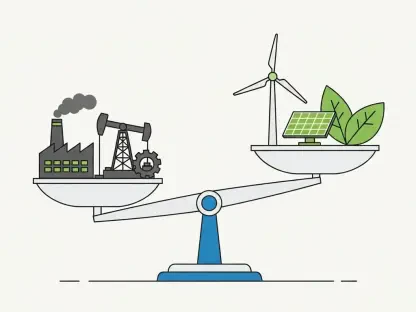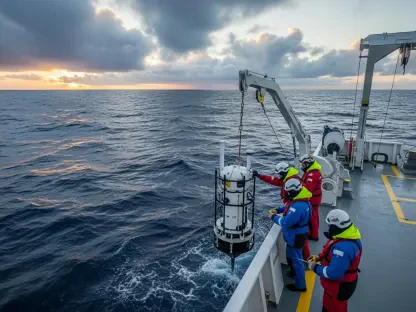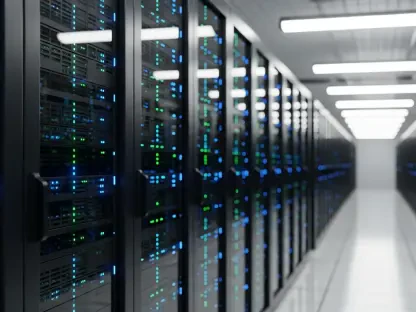The controversy surrounding the potential demolition of four Snake River dams in Washington state has sparked intense discussion among environmentalists, scientists, and political figures. While environmental activists champion the removal of these dams to save declining salmon populations, recent scientific observations and technological advancements present a more complex picture. This article delves into the multifaceted debate, examining the historical context, current innovations, conflicting claims, and broader implications of dam removal.
The Ecological Dilemma: Salmon on the Brink
Historical Impact of Dam Construction
The construction of the Snake River dams in the 1970s dramatically disrupted local ecosystems. Salmon populations experienced a significant decline, attributable to the barriers these massive structures imposed on their migration routes. With the spawning routes blocked, the majestic journey of the salmon from ocean to river became fraught with peril and near insurmountable obstacles. Consequently, the diminished numbers of salmon led to heightened activism and a passionate rallying cry: “Breach those dams, now is the time, our fish are on the line!” This clarion call has resonated profoundly with environmental groups who view the dams as archaic relics impeding natural systems.
It’s essential to understand that during the initial years following the construction of these dams, the environmental repercussions were not merely speculative; they were empirically observable. The dramatic decline in salmon populations prompted an urgent reassessment of the impact of hydroelectric projects on the environment. The sharp decrease in salmon numbers became a focal point for conservation efforts, fueling a movement keen on restoring the ecological balance that existed prior to the dams. By contextualizing the historical impact of dam construction, we begin to grasp why the call for their removal persists with such fervent urgency today.
Technological Innovations for Salmon Protection
In response to the dire consequences observed in the past, engineers have developed several technological innovations to aid salmon migration. Advancements like fish ladders and spillways, which are designed to facilitate safer passage for the salmon, are now installed on these dams. These measures ensure that between 96% and 98% of salmon successfully navigate the barriers, according to Todd Myers, Environmental Director at the Washington Policy Center. This high success rate is a testament to how far engineering solutions have come in attempting to harmonize human infrastructure with natural ecosystems.
The implementation of these fish-protecting technologies represents a significant shift from the past. Where history marks a period of nutrient-rich rivers turning into veritable deserts for salmon, contemporary strategies indicate a paradigm where industrial progress coexists with ecological preservation. The innovations aim to mitigate the negative impacts while exploiting the benefits of renewable energy from the hydroelectric dams. Yet, questions remain about whether these measures are enough to fully counteract the historical damage, and if further actions are necessary to achieve a sustainable equilibrium.
Conflicting Narratives: Activists vs. Scientists
Emotional Appeals and Conservation Efforts
Environmental advocacy groups continue to emphasize the purportedly critical threat that the dams pose to salmon populations, despite advancements. These organizations leverage emotional appeals to galvanize public and political support, encapsulated in dramatic claims of impending extinction. Such appeals often spotlight vivid imagery of salmon struggling against the barriers, creating a compelling narrative that resonates with a concerned public. The sensational tone and evocative messaging serve to underscore the perceived urgency of dam removal, portraying it as an immediate remedy to the crisis.
Activists argue that technological innovations, while beneficial, are insufficient to fully restore salmon populations to their former glory. They posit that the complete removal of the dams is the only viable option for ensuring the long-term survival of these fish species. The intense emotional campaigns create a platform for broader environmental advocacy, connecting the plight of the salmon to larger issues of ecological justice and sustainability. However, the effectiveness of these emotional appeals is often questioned by experts who suggest that they may oversimplify a complex issue, potentially misleading the public and policymakers.
Scientific Evidence and Contemporary Realities
Conversely, contemporary scientific data tells a different story. Federal scientific agencies have consistently reported that the Snake River dams no longer pose significant risks to fish populations. The high passage success rates reflect the effectiveness of modern innovations, undermining the activists’ extreme narratives. Scientific observations suggest that while the dams do pose challenges, they are not the sole, nor the most significant, factor influencing salmon populations. Other environmental variables, such as ocean conditions, predators, and climate change, also play crucial roles.
The scientific community often finds itself at odds with the emotionally charged narratives propagated by environmental groups. For instance, federal agencies have documented improvements in salmon survival rates, attributing these successes to improved technology and effective fish management practices. These findings challenge the notion that dam removal is an unequivocal good, raising questions about the broader implications for energy production, water management, and regional economies. By bringing empirical evidence into the debate, scientists urge a more nuanced examination of the issue, advocating for solutions that balance ecological health with technological and economic realities.
The Role of Misinformation in Environmental Activism
Strategic Use of Sensationalism
The persistence of dire claims by some environmental groups can be understood within a broader strategy. Sensationalism attracts media attention, boosts fundraising efforts, and amplifies political influence. Critics argue that this focus on emotional appeals rather than evidence-based results can mislead the public. Todd Myers, for instance, critiques this approach by suggesting that activists prioritize what feels impactful over what actually achieves environmental benefits. This tendency towards sensationalism is seen as a double-edged sword, capable of both mobilizing support and distorting the truth.
The strategic use of dramatic narratives is not merely an act of miscommunication but a calculated effort to maintain momentum in the environmental advocacy realm. The emotional resonance of extinction fears exerts pressure on policymakers to act swiftly, sometimes prioritizing immediate, visible actions over long-term, sustainable solutions. While these tactics can indeed bring about significant shifts in public policy, they also risk simplifying complex environmental challenges into binary choices, where nuanced, multifaceted strategies might be more effective.
Balancing Advocacy and Scientific Integrity
The ongoing debate highlights the need for a balanced perspective that harmonizes scientific integrity with effective advocacy. Todd Myers critiques the emotional appeals, suggesting that activists should focus more on strategies that yield tangible environmental benefits. For instance, rather than advocating solely for dam removal, environmental groups could champion a range of scientifically validated conservation measures that address multiple factors impacting salmon populations. The challenge lies in finding a middle ground where advocacy campaigns can retain their emotive power without compromising on factual accuracy or strategic effectiveness.
The discourse surrounding the Snake River dams thus serves as a case study in the broader context of environmental activism. It underscores the importance of critical thinking and evidence-based policymaking in addressing ecological issues. Advocacy and science need not be at odds; instead, they can complement one another by grounding emotionally compelling narratives in rigorous, empirical research. This balanced approach can foster more effective, sustainable solutions that garner broad-based support from both the public and the scientific community.
Political and Economic Ramifications
Political Stances and Legislative Impacts
The discourse on dam removal has extended into the political realm, influencing lawmakers and policy decisions. Idaho’s Republican Representative Mike Simpson’s standpoint—that maintaining the dams might jeopardize salmon populations—illustrates the high-stakes gamble involved in balancing ecological and economic priorities. Legislative actions often reflect the contentious nature of this debate, as policymakers grapple with competing interests and divergent viewpoints. Simpson’s stance highlights the political complexities surrounding the issue, as it intertwines environmental concerns with regional economic and energy needs.
The political ramifications extend beyond local and state levels, influencing national conversations about environmental policy, energy production, and infrastructure development. Lawmakers must navigate the polarized landscape, where constituent pressure, scientific evidence, and economic imperatives converge. Policy decisions regarding the Snake River dams have the potential to set precedents for similar infrastructure projects across the country, making this debate a microcosm of broader national and even global challenges concerning sustainable development and environmental stewardship.
Power Generation and Economic Considerations
The potential demolition of the Snake River dams also introduces significant concerns regarding power generation. These hydroelectric structures contribute substantially to the region’s energy needs, and their removal could disrupt the local energy grid and economy. Policymakers must weigh these consequences carefully, considering the broader economic implications alongside ecological benefits. The dams not only provide renewable energy but also play a role in regional water management, irrigation, and recreational activities, making their removal a multifaceted issue with far-reaching impacts.
Economically, the dams are integral to the local communities, providing jobs, supporting industries, and contributing to the overall economic stability of the region. The trade-offs involved in their potential removal must be meticulously evaluated, balancing short-term disruptions with long-term gains. Questions arise about alternative energy sources, the costs of transitioning to different power systems, and the potential economic impacts on sectors reliant on the dams. Striking this balance requires a comprehensive assessment, incorporating economic forecasts, technological feasibility studies, and an understanding of the socio-economic fabric of the affected regions.
Alternative Solutions for Salmon Recovery
Predatory Control Measures
While some advocate for dam removal, others suggest alternative strategies for salmon recovery. Predatory control measures, such as managing populations of seals and sea lions that prey on salmon, might provide a viable solution without the drastic step of dam dismantling. These measures involve targeted actions to reduce predation pressures on salmon populations, thereby enhancing their chances of survival and recovery. By addressing one of the multiple factors impacting salmon, predatory control can complement other conservation efforts and contribute to a broader, integrated approach to ecosystem management.
These alternative strategies require careful planning and execution to ensure they are both effective and humane. Control measures must balance the ecological roles of predators with the need to protect vulnerable salmon populations. Additionally, these strategies provide an opportunity for collaborative efforts between scientists, policymakers, and conservationists, fostering an integrated approach to solving complex ecological challenges. The focus on predatory control reflects a shift towards more nuanced, targeted interventions that address specific threats to salmon without radical environmental or infrastructural changes.
Comprehensive Conservation Strategies
Effective salmon conservation requires a multifaceted approach that includes habitat restoration, improved hatchery practices, and enforcement of fishing regulations. By adopting a holistic strategy, stakeholders can work toward sustainable solutions that benefit both ecology and economy. Habitat restoration initiatives aim to revive natural riverine environments, providing conducive conditions for salmon spawning and growth. Improved hatchery practices focus on genetic diversity and the health of salmon populations, ensuring resilience against environmental stressors. Enhanced fishing regulations prevent overfishing, allowing salmon populations to recover and thrive.
Implementing comprehensive conservation strategies necessitates collaboration across various sectors, including government agencies, scientific institutions, and local communities. These initiatives benefit from inclusive, participatory approaches that consider the perspectives and needs of all stakeholders. By combining regulatory measures with innovation and community engagement, salmon conservation efforts can achieve more significant, lasting impacts. This integrated approach also enables the identification and mitigation of multiple stressors affecting salmon populations, fostering a balanced and sustainable recovery.
Technological Adaptation and Environmental Policy
The Evolution of Environmental Mitigation
The advancements in fish-protecting technologies underscore a broader trend of technological adaptation in environmental policy. Innovations allow for the reconciliation of infrastructural development with ecological preservation, demonstrating the potential for harmonious coexistence. These technological interventions reflect an evolving understanding of human-environment interactions and the potential for engineered solutions to mitigate ecological impacts. The successful implementation of fish ladders, spillways, and other innovations highlights the importance of continuous learning and adaptation in environmental conservation efforts.
Technological advancements also prompt broader discussions about the role of innovation in addressing environmental challenges. They serve as examples of how science and engineering can provide practical solutions that balance human needs with ecological health. The focus on technological adaptation signifies a shift towards more sustainable development practices, recognizing the need to integrate environmental considerations into infrastructure planning and management. This trend encourages policymakers, engineers, and environmentalists to collaborate in designing and implementing solutions that benefit both nature and society.
Future Prospects and Policy Directions
The debate over potentially demolishing four Snake River dams in Washington state has ignited fervent discussions among environmentalists, scientists, and political figures. Environmentalists advocate for the removal of these dams to rescue dwindling salmon populations, arguing that the free-flowing river would offer much-needed habitat for these fish to thrive.
However, recent scientific studies and technological advancements complicate this narrative. Some new findings suggest that dam removal might not be the panacea many hope for. Innovative technologies, such as fish ladders and improved water management systems, could mitigate the negative impacts on salmon without requiring the dams’ destruction. Furthermore, the dams play a critical role in hydroelectric power generation, irrigation, and navigation, which are vital to the regional economy.
The issue of whether to remove the dams is deeply rooted in history and carries significant broader implications. It’s a topic filled with conflicting claims, requiring a delicate balance between ecological concerns and the needs of human communities. The controversy continues to unfold, revealing the complexity of finding a solution that addresses both environmental preservation and the socioeconomic needs of the region. As the discussion progresses, it is essential to consider all perspectives and emerging evidence to make informed decisions.









